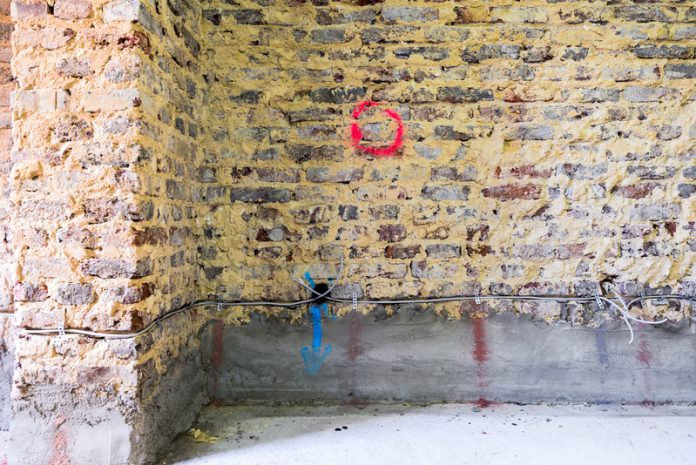Remediation work carried out in the 1990s could now be considered outdated or even unsafe under current risk assessment procedures. Matthew Pannett and Neil Loesher of Ramboll examine the key risks and implications of dealing with these sites
Arguably, the late 1980s and early 1990s marked the inception of modern environmental site investigation and remediation; the knowledge and skills of consultants and regulators were honed and developed as brownfield redevelopments gathered pace.
As a result, early 1990s remediation projects were sometimes considerably over-engineered, due to the relatively cheap ‘dig and dump’ remediation approaches accepted at the time. By contrast, many lower-profile developments proceeded with either limited or no remediation, due to a lack of risk assessment expertise, an absence of regulatory scrutiny or land contamination not being considered.
So, what should regulators and owners of sites that underwent remediation in the 1990s do? How can they ensure sites are safe in continued use and that future use options and resale values are not undermined?
Current regulatory approaches
Current government funding for contaminated land regulators leaves little resources to examine previously remediated sites and therefore it is very unlikely that a regulator would revisit a 1990s remediated site without prompting. While there are regulatory tools available, there is not the appetite or resources for legal action to rectify past remediation ‘mistakes’.
Even in the few incidences when action is taken, it does not always succeed. An example is the Secretary of State’s decision in Jim 2 Ltd v Walsall Borough Council, which saw a remediation notice served by the council quashed.
At present, the government is not experiencing the kind of public scrutiny that might force land contamination up the agenda. Nevertheless, increasing housing pressure will bring land remediated previously in the 1990s (perhaps for a commercial or industrial end use) back into the planning system once again, triggering a need to reappraise previous assessments, assumptions and techniques.
Key risks of 1990s-remediated sites
Science and government policy change. What was acceptable in the 1990s may now be considered outdated and potentially ‘unsafe’ under current risk assessment methodologies. Even if sites have previously been through a regulatory-approved remediation process, there may be a need for further assessment and treatment due to the tightening of regulatory and scientific approaches. For example, groundwater assessment and remediation in the
1990s was frequently either overlooked or involved hugely technical methods that were often ineffective. Residual groundwater contamination may in future be considered a risk, requiring ‘new’ remediation over that undertaken in the 1990s in order to ensure the sustainability of water supplies.
The bar is continually raised in response to developments in methods of detection and the understanding of contaminants. For example, sites may contain contaminants that were not even known about or considered relevant in the 1990s, such as perfluorinated compounds. Many European countries, and the US, now have a much greater focus on contaminant vapours and how they may migrate into buildings and affect residents or workers. This is an area where scientific understanding has moved forward
since the 1990s and is likely to have much more focus in the UK. This could have implications for sites which may have had ‘volatile’ contamination in the past, such as petrol stations and gasworks.
Contamination also changes over time: it can degrade, migrate, convert into other forms and stabilise. Environmental changes can also affect contamination, so changes in groundwater levels and other climate influences can result in new or enhanced pathways and associated risks. In other cases, remedial measures may have ceased to be effective, through lack of maintenance, age, deficiencies in design or installation, or changes to the site.
Implications
The current approach to remediation by the government and regulators centres around sustainability. This means that remediation should be proportionate and manageable. Often, assessments of risks have many factors of safety built-in and an experienced eye can take a measured approach to risk, drawing on evidence to provide appropriate assurance, even if documentation is dated or incomplete.
A good environmental consultant should cast a critical eye over historical data and remediation documentation and provide a reasoned assessment of risks: the knowns, unknowns and data gaps. Advances in risk assessment can sometimes shed new light on older sites; for example, where target concentrations adopted for remediation in the 1990s may, in fact, have been unduly conservative when considered against current standards.
Understanding these factors will enable businesses to take decisions with much more certainty and anticipate the level of investigation, risk assessment and remediation that a regulator may expect. While many sites may need new ground investigations to understand their contamination status, drawing together a site’s previous remedial history can help streamline further remedial efforts towards the most sustainable outcome for the client and society.
Ultimately, there is no need to panic when confronted with a 1990s-remediated site, or to assume it needs re-remediation. Some sites may be entirely fine, and others may simply need to be better understood. However, the threat posed by 1990s remediation can be effectively mitigated by careful planning and research, especially when allied with diligent use of documentation.
Matthew Pannett

Principal
Ramboll UK
Tel: +44 2078 081 420
www.ramboll.co.uk/contact/view/mpannett
Neil Loescher

Managing Consultant
Ramboll UK
Tel: +44 1225 748 420
www.ramboll.co.uk/contact/view/nloescher













![[Video] Fireco: 80 new fire doors required for residential flats in London](https://www.pbctoday.co.uk/news/wp-content/uploads/2025/04/2024-06-01-Lords-view-one_1200x750_004-218x150.webp)
